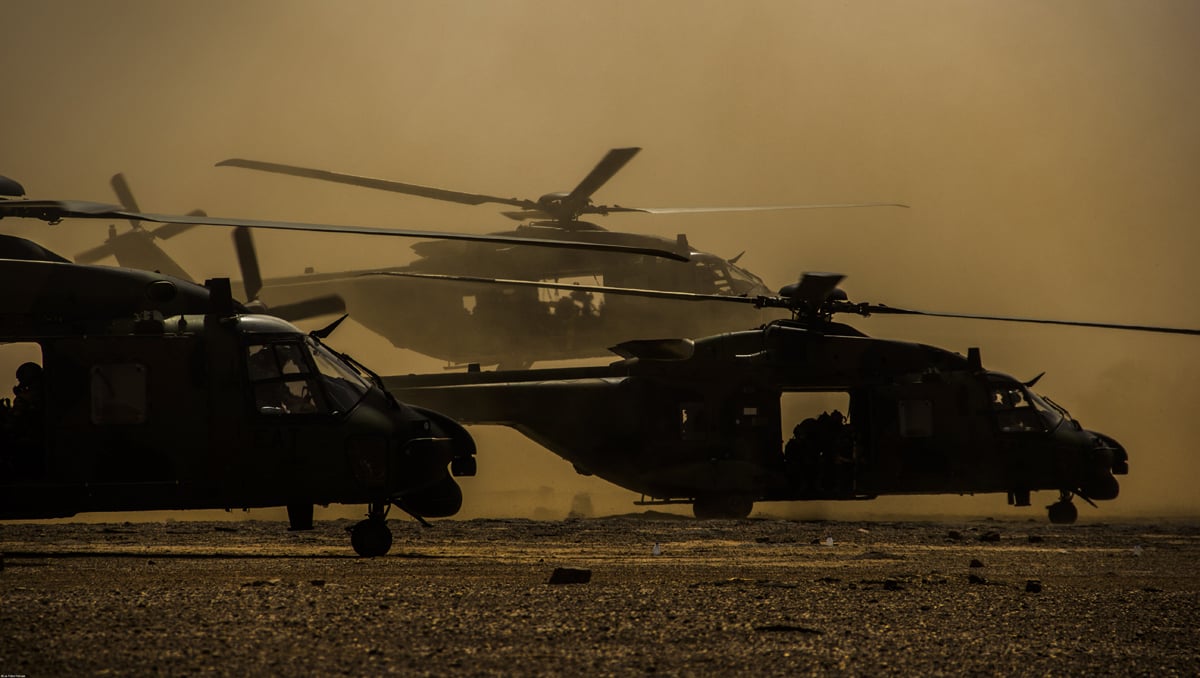Click Here to View This Page on Production Frontend
Click Here to Export Node Content
Click Here to View Printer-Friendly Version (Raw Backend)
Note: front-end display has links to styled print versions.
Content Node ID: 402756
NH Industries has received a development and production order from the NATO Helicopter Mangement Agency (NAHEMA) for the conversion of NH90 Tactical Transport Helicopters (TTHs) into the NH90 FS (Forces Spéciales) version for the French army. The contract, signed on September 29, is an amendment to an existing production contract and covers the conversion of the final 10 aircraft of France’s 74 TTH order to the new variant, which is also known as the TFRA Standard 2.
France’s Aviation Légère de l’Armée de Terre (ALAT, light army aviation) first revealed plans for a special forces NH90 in 2015, and over the past 18 months the country’s Direction Générale de l‘Armements (DGA) procurement agency has been working closely with NAHEMA, as well as involvement with Australia and Belgium, to finalize the requirement. Under France’s 2019-2025 military programs budget legislation the first five NH90 FSs are scheduled for delivery in 2025, with the remainder following in 2026. They are to serve with the 4e Régiment d’Hélicoptères des Forces Spéciales based at Pau in the Pyrenees region of southern France. The 4e RHFS was involved in defining the NH90 FS specification.
Equipment suppliers Thales and Safran are key partners in the conversion program. A key requirement is to greatly improve visibility and safety for the crew during operations in degraded visual environments (DVE), such as those encountered during operations in the Sahel-Sahara region.
Safran is to supply the Euroflir-410 electro-optical system (EOS) that features 10 multi-spectral channels. Modifications will allow the EOS to be controlled from various work-stations and tablets, including those for loadmasters and gunners, the latter firing M3M 0.5-inch machine guns from the side doors. The system will also allow commandos to use the sensor for updated mission planning immediately prior to egress. A new-generation 3D digital map is being installed.
While these modifications are being made for the first phase of the program, the aircraft will also be provided with the necessary electrical modifications to incorporate a second phase of improvements. These center around the upgrading of the Thales TopOwl helmet sight system from an analog to a digital display and the installation of the Safran EuroflEye distributed aperture optronics system. The latter will have sensors peering out from a fairing above the EOS to provide independent sideways vision for both pilots, an important safety feature for DVE operations. Imagery from both the EOS and EuroflEye can be presented on the digital helmet display simultaneously, along with tactical 3D symbols and augmented reality features such as synthetic terrain and obstacle imagery.
Other changes include removable leaf doors and a roof beam that will permit fast-roping from the rear ramp. The rear ramp will also be capable of being used inflight. Folding boarding steps will be mounted in both rear and cabin doors. The NH 90 FS will also be able to carry external fuel tanks on either side of the cabin for extended range.
While the NH90 FS is leading the development of these features, they are expected to find their way into the TTH fleet in the future, and are also available for export.
NH Industries—a consortium of Airbus Helicopters, Leonardo, and Fokker—has 566 of the 11-tonne NH90 on order in both TTH and NATO Frigate Helicopter (NFH) versions, the latter being optimized for maritime missions, including anti-surface and anti-submarine warfare. France has ordered 74 TTHs and 27 NFHs, of which 45 and 24 have been delivered, respectively.
